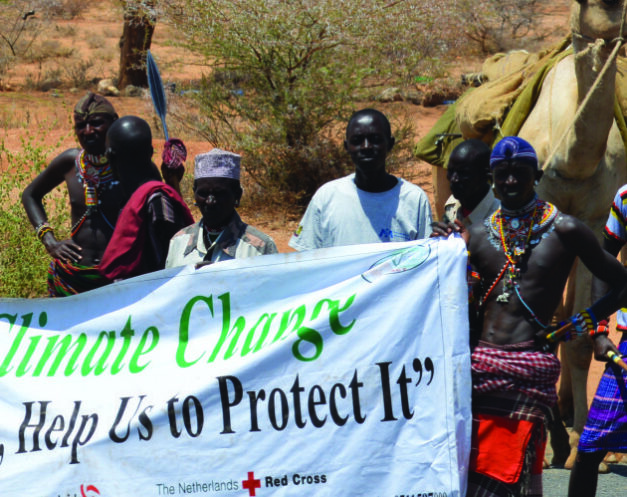Kenya’s Tana Delta: maintaining biodiversity for people and ecosystems

The Tana River Delta in Kenya is one of the largest and most significant coastal delta ecosystems in Eastern Africa. In order to protect the outstanding diversity of nature here in the face of a changing climate and economy, we support local pastoral, agricultural and fishing communities to manage their wetlands and maintain water resources in a sustainable manner.
The Tana Delta consists of an impressive variety of freshwater, floodplain, estuarine and coastal areas with extensive mangroves, intertidal areas and pristine beaches, forming a large and very productive coastal ecosystem. As a result, it was recently designated as Kenya’s 6th Ramsar Wetland of International Importance. The Tana Delta is rich in nature, supporting several highly threatened species of animals and plants, including five species of threatened marine turtles, the IUCN red-listed African elephant, and three species of monkey. The delta supports tens of thousands of wetland birds, making it one of the key sites in the country for waterbird conservation. The delta supports over 100,000 people who practice pastoralism, agriculture and fishing, and depend on the delta’s ecosystem.
Challenges
The Tana Delta has been the focus of a number of agricultural development projects over the last three decades which have been controversial and largely questioned even by local communities. These include sugarcane farming, irrigation, and aquaculture projects such as prawn and biofuel farming. The Tana Delta and the upstream part of the basin also suffer from deforestation, immigration and slash and burn farming practices, wildlife poaching and illegal fishing and illegal commercial prawn trawling. Upstream hydrological changes such as damming and water diversions for irrigation and urban domestic water use create threats to the delta ecosystem. Oil and gas exploration are polluting and degrading the delta. In the delta, the local communities are also grappling with unclear land ownership, conflicts over resource use and insecurity. Overall, the environmental threats are caused by poor environmental governance and fragmented decision-making.
Achievements
We support local communities to take on wetlands management and take responsibility for their environment. Together with them, we gather information on the functions and values of the ecosystem to inform local communities on land use practices that take into account the environment and shape local, regional and national policy.
- Strengthening of Community-based organisations and train them on natural resource management, advocacy, entrepreneurship, business planning, resources development, supply chain development and value chain analysis;
- Formation and strengthening of cooperative societies to improve the market value chain of products such as fish and enhance the influence and power of community thereby improving their household income;
- Support the establishment of enterprises like fisheries and equipped with climate friendly technology such as solar driers. This reduces the perishability of the fish and provides more opportunities for far away markets;
- Conducted an assessment of CBOs in the Tana Delta and their natural resources bases and subsequent development of sustainable land use business models for the sustainable use of natural resources, with tangible and reliable environmental and socio-economic benefits;
- Local natural products such as baobab and eco-charcoal have been audited by the Forest Stewardship Council of Kenya
- Supported the development of appropriate CBO equipment for sustainable eco-charcoal and baobab processing replication;
- Conducted an internal certification audit for Tana Delta CBOs in Witu and Kipini Divisions to ensure their forestry activities, management and production systems were compliant with the Forest Stewardship Council principles and criteria
- Local resource use plans and community policy guides have been developed and disseminated, to assist in the sustainable use of the natural resources;
- Initiated a program for the conservation and sustainable management of mangroves within the Tana Delta
- Supported the completion of the first draft of the Tana Delta Land Use Plan (LUP) which is anticipated to provide direction towards the desired future for the Delta and facilitate consistent and predictable decision making on future development issues
- Partnered with UNEP, WRMA, Dutch Ministry of Economic Affairs and initiated a TEEB study for the Tana Delta
- Supported the community groups to establish a delta wide umbrella group, the Tana Delta Conservation Network (TDCN) that has been admitted to the County Natural Resources Management (NRM) forum
- Introduction of a microfinance scheme for two farmer cooperative societies and the TDCN with good results;
- Endorsement of the National Wetlands Policy, which is envisaged to promote the wise use and conservation of wetlands;
- Designation of Tana Delta as a Ramsar site.
Action Partners:
Environment Liaison Centre International
Nature Kenya
Wild Living Resources
UNEP
Water Resources Management Authority of Kenya
Dutch Ministry of Economic Affairs
